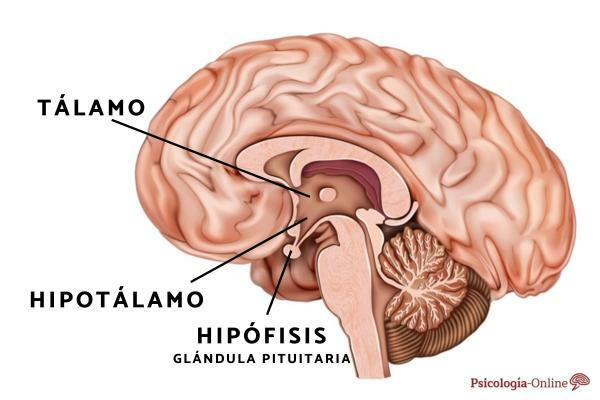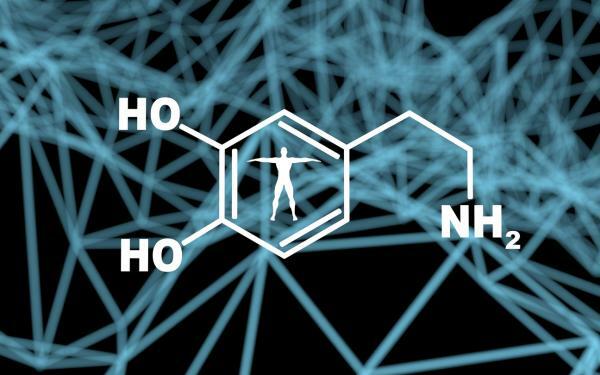
A few weeks ago we saw how Pablo Motos, host of a well-known television program, helped the journalist Jordi Évole who was suffering from an episode of cataplexy. In the images you can see how the journalist clings to the table and the chair as if he were dizzy and the presenter came scared to help him, trying to support him.
Cataplexy or "cataplexy" is a very striking problem, which can end with the person collapsing on the ground. He continues reading if you want to know more about this curious phenomenon. In this Psychology-Online article we talk about the cataplexy: what is it, symptoms, causes and treatment.
Index
- What is cataplexy
- Cataplexy and narcolepsy
- Cataplexy symptoms
- Causes of cataplexy
- Treatment of cataplexy
What is cataplexy.
The American Psychiatric Association Dictionary of Psychology[1]defines cataplexy as a sudden loss of muscle tone that occurs temporarily. This loss can appear localized, involving a specific muscle or muscle group, or generalized, involving the entire body.
We should not confuse cataplexy with other terms such as catalepsy, catatonia or narcolepsy. Let's see what they are:
- Catatonia: it is an alteration of motor behavior among which rigidity or catalepsy may appear.
- Catalepsy: related to a fixed physical posture or attitude for a long period of time.
- Narcolepsy: it is a disorder in which episodes of sleep appear in waking hours and that can appear with or without cataplexy.
Although we differentiate narcolepsy and cataplexy because each term refers to a different phenomenon, the truth is that both are closely related. Therefore, we dedicate the following section to this relationship.
Cataplexy and narcolepsy.
The American Psychiatric Association[2] indicates that the cataplexy is an almost exclusive symptom of narcolepsy. The truth is that in the main classifications of mental disorders DSM-5 (American Psychiatric Association) and ICD-11 (World Health Organization)[3], cataplexy as such only appears associated with this disorder.
The ICD-11 classification distinguishes between two types of narcolepsy: type 1 narcolepsy and type 2 narcolepsy. In the first it would be in which the person experiences cataplexy and in the second it would not be present.
In the case of DSM-5, there is only one type of narcolepsy that can be accompanied by a series of specifiers, such as whether or not cataplexy appears or if there is hypocretin deficiency. This classification also specifies the level of severity and includes the frequency of occurrence of cataplexy episodes:
- Mild narcolepsyCataplexy is rare and appears less than once a week.
- Moderate narcolepsy: cataplexy appears once a day or every few days.
- Severe narcolepsyCataplexy is resistant to drugs and appears several times a day.
Cataplexy symptoms.
Cataplexy, as we have seen, does not constitute a disorder as such, therefore, it would be more It is appropriate to talk about its characteristics rather than its symptoms, since cataplexy would be a symptom in herself. Following Dauvilliers[4], the characteristics of cataplexy are as follows;
- With loss of muscle tone postural collapse, jaw drop, and knee weakness appear. Loss of muscle tone is also reflected in a decrease in electromyographic activity.
- The person does not lose consciousness during the cataplexy episode.
- Intensely emotional stimuli such as laughter trigger cataplectic seizures.
- The episodes are brief last seconds or minutes.
- At the brain level, measured through electroencephalography, a mixture of behavior similar to that of REM sleep and to the vigil.
Causes of cataplexy.
Strong emotional stimuli, such as laughter or surprise, would be the triggers of cataplexy episodes. The dictionary of the American Psychiatric Association also indicates that unpleasant emotional stimuli they trigger cataplectic episodes, for example, elevated anxiety. They also state that sometimes patients do not find clear triggers for their cataplectic episodes.
Among the different brain structures involved in cataplexy, we could find brain amygdala, the hypothalamus, prefrontal cortex or somatosensory cortex. Furthermore, deficiency of orexin, a neuropeptide, is also related to episodes of cataplexy.
Treatment of cataplexy.
At the psychological level, within the cognitive-behavioral framework, the therapist will work with the patient on the recognition and control of emotionally intense situations that can trigger cataplectic episodes.
Following Marín-Agudelo and Vinaccia[5], the techniques of choice for treatment are based on sleep hygiene, improving sleep quality and the creation of habits related to it such as relaxation techniques, stimulating control and cognitive techniques.
The psychological treatment should be combined with pharmacological treatment, which will be essential in these cases. Among the drugs that we find in the treatment of cataplexy we cite gamma-hydroxybutyric acid or GHB, tricyclic antidepressants, selective inhibitors of the reuptake of serotonin and / or norepinephrine and monoamine oxidase inhibitors (MAOI).
This article is merely informative, in Psychology-Online we do not have the power to make a diagnosis or recommend a treatment. We invite you to go to a psychologist to treat your particular case.
If you want to read more articles similar to Cataplexy: what it is, symptoms, causes and treatment, we recommend that you enter our category of Neuropsychology.
References
- American Psychiatric Association (2020). APA Dictionary of Psychology. Recovered from https://dictionary.apa.org
- American Psychiatric Association (2014). DSM-5. Reference guide to the diagnostic criteria of the DSM-5-Breviary. Madrid: Editorial Médica Panamericana.
- World Health Organization (WHO) (2018) International Classification of Diseases, 11th revision. Recovered from https://icd.who.int/es
- Dauvilliers, Y., Siegel, J.M., López, R., Torontali, Z.A. and Peever, J.H. (2014) Cataplexy-clinical aspects, pathophysiology and management strategy. Nature Review Neurology, 10 (7): 386-395. doi: 10.1038 / nrneurol.2014.97
- Marín, H.A. and Vinaccia, S. (2005) Cognitive-behavioral model of the narcolepsy-cataplexy syndrome: theoretical exposition. Journal of Psychopathology and Clinical Psychology, 10 (3), 153-172.
Bibliography
- Balam Álvarez García, H. and Jiménez Correa, U. (2020). Psychological intervention in sleep disorders: an updated review. Contemporary Clinic, 11 (2). DOI:10.5093 / cc2020a9
Cataplexy: what it is, symptoms, causes and treatment


